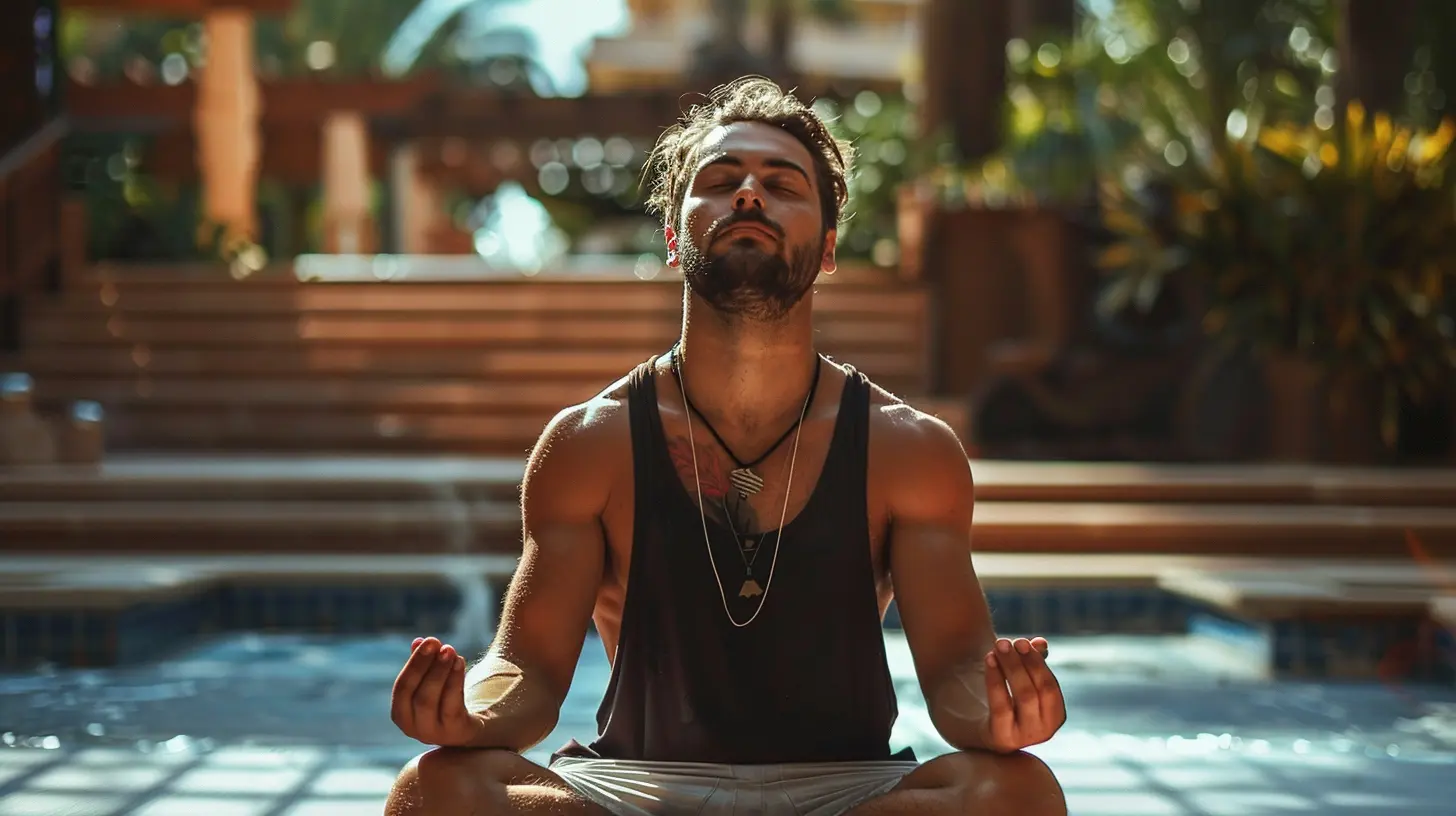How Meditation Can Speed Up Muscle Repair After a Workout
20 October 2025
When you hit the gym hard, your muscles take a beating. That soreness you feel post-workout? It’s your body’s way of telling you that it's repairing and rebuilding muscle fibers. While protein shakes, rest, and stretching are all great ways to aid recovery, there’s another powerful tool many overlook—meditation.
Yes, you read that right. Meditation isn’t just for relaxation and mental clarity; it can actually help your muscles heal faster. But how? Let’s break it down.

Understanding Muscle Recovery
Before we get into how meditation helps, let's first understand what happens to your muscles after a workout.What Happens to Your Muscles During Exercise?
Every time you challenge your muscles with resistance training or intense workouts, tiny micro-tears occur in the muscle fibers. This is completely normal and necessary for muscle growth. However, these micro-tears trigger an inflammatory response, leading to muscle soreness, stiffness, and fatigue.How Does Muscle Repair Work?
Your body has a natural recovery process that involves:- Reducing inflammation to prevent excessive swelling
- Protein synthesis to rebuild damaged fibers
- Hormonal balance to regulate muscle growth and repair
- Proper blood circulation to deliver oxygen and nutrients
While these processes happen automatically, what if there was a way to accelerate them? This is where meditation steps in.

The Link Between Meditation and Muscle Recovery
Meditation does more than just calm the mind—it reduces stress, improves circulation, and balances hormones, all of which are essential for muscle recovery. Let's dive into the science.1. Meditation Lowers Cortisol Levels
Cortisol, often called the stress hormone, can be a major roadblock to muscle recovery. When your cortisol levels are high, your body's ability to repair muscles slows down.Intense workouts already increase cortisol levels, but when combined with daily stress, they can skyrocket. Meditation helps by activating the parasympathetic nervous system, which naturally lowers cortisol. Less cortisol means:
- Faster muscle repair
- Reduced inflammation
- Better sleep, which is crucial for recovery
2. Improved Blood Circulation
Meditation, especially deep breathing exercises like diaphragmatic breathing, improves circulation. Why does this matter? Because your muscles need oxygen-rich blood to repair efficiently.Better circulation means:
- More oxygen and nutrients reaching damaged muscle fibers
- Faster removal of metabolic waste (like lactic acid)
- Reduced muscle stiffness and soreness
3. Enhanced Muscle Relaxation
Ever felt your muscles stay tense long after a workout? This tension can hinder recovery by restricting blood flow and limiting flexibility.Meditation induces muscle relaxation by reducing neural excitability and calming your central nervous system. This allows your muscles to ease up, promoting quicker healing and decreasing post-workout stiffness.
4. Better Sleep for Faster Recovery
Your deepest muscle recovery happens during sleep. It’s during those deep sleep cycles that your body releases human growth hormone (HGH), which plays a critical role in muscle repair.Meditation—especially before bed—improves sleep quality by:
- Reducing anxiety and overthinking
- Lowering heart rate and blood pressure
- Encouraging deeper, more restorative sleep
Better sleep equals faster muscle repair. Simple as that.
5. Reduced Perceived Muscle Pain
Pain perception isn’t just physical; it’s also mental. Meditation has been shown to rewire the brain’s pain response, making you feel less discomfort from sore muscles.A study published in the Journal of Pain found that people who practiced mindfulness meditation had a higher pain tolerance compared to those who didn’t. This means that meditation can actually help you feel less sore, even if your muscles are still healing.

How to Use Meditation for Faster Muscle Recovery
Now comes the practical part—how do you actually integrate meditation into your routine?1. Post-Workout Meditation (10-15 Minutes)
Right after a workout, when your heart rate is still elevated, take 10-15 minutes to meditate. Find a quiet space, sit comfortably, and focus on your breath. This helps:- Lower your cortisol levels quickly
- Promote muscle relaxation
- Improve nutrient delivery to muscles
2. Body Scan Meditation (Great for Recovery Days)
A body scan meditation focuses on each part of your body, helping you release tension muscle by muscle. Try this on rest days:1. Lie down in a comfortable position.
2. Close your eyes and take deep breaths.
3. Focus your attention on your toes, then slowly move up to your calves, thighs, and so on.
4. With each breath, imagine tension melting away.
3. Deep Breathing with Visualization
Visualization meditation is powerful for muscle recovery. Picture oxygen-rich blood flowing to your sore muscles, healing and strengthening them. Pair this with deep, slow breaths to amplify the effects.4. Nighttime Meditation for Better Sleep
Before bed, try a guided sleep meditation to quiet your mind and prepare for deep rest. Apps like Headspace or Calm offer great sleep-focused meditations.
Additional Tips to Boost Recovery
While meditation is an excellent tool, it works best when combined with:- Proper Nutrition – Eat enough protein and anti-inflammatory foods.
- Hydration – Drink plenty of water to flush out toxins.
- Stretching & Mobility Work – Yoga or dynamic stretching helps prevent stiffness.
- Cold Therapy & Heat Therapy – Ice baths or warm compresses can aid in muscle recovery.
Final Thoughts
Meditation isn’t just a mindfulness practice—it’s a powerful recovery tool for athletes and fitness enthusiasts. By lowering stress, improving circulation, and enhancing sleep, meditation helps your body repair muscles faster, so you can get back to training stronger and feeling better.So next time you finish a tough workout, instead of just grabbing a protein shake, take a few minutes to quiet your mind. Your muscles will thank you for it.
all images in this post were generated using AI tools
Category:
Post Workout RecoveryAuthor:

Holly Ellison
Discussion
rate this article
1 comments
Caelestis Fisher
Unlock your body’s full potential! Meditation isn't just for the mind; it's a powerful ally in muscle recovery. Embrace the calm, focus your energy, and watch your body heal faster. Elevate your workouts and recovery with the transformative power of mindfulness!
October 31, 2025 at 5:59 AM

Holly Ellison
Thank you for highlighting the incredible benefits of meditation for muscle recovery! Embracing mindfulness truly enhances both physical and mental well-being.


